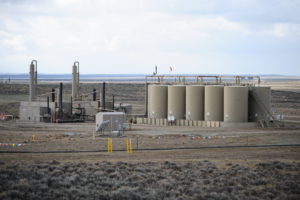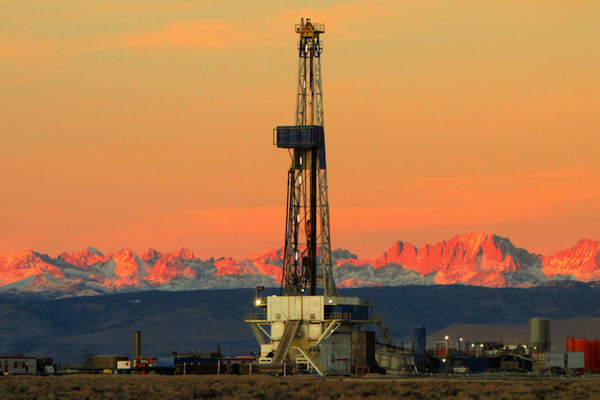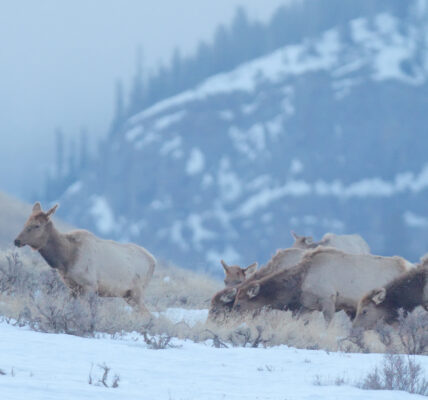Glimmer of hope for oil and gas industry; a welcome reprieve midst an energy crisis fueled by pandemic
By Camille Erickson
Casper Star-Tribune
Via- Wyoming News Exchange

CASPER — The price for a barrel of oil inched just over $30 Monday morning, a welcomed reprieve for oil and gas operators stuck in the midst of an energy crisis fueled by the COVID-19 pandemic.
But the tough market conditions that have forced Wyoming oil and gas producers to shut in wells and lay off workers in droves since March appear far from resolved.
West Texas Intermediate, the U.S. benchmark for oil, rallied to $32.12 a barrel at the week’s opening, a marked improvement compared to last month when May West Texas Intermediate front-month futures price contracts sold for as low as negative $37.63 a barrel on April 20.
Beginning in March, U.S. oil producers started contending with a global price war and glut in supply, amid a pandemic voraciously eating away at fuel demand. The crash in oil prices, combined with a shortfall in storage, has left many oil and gas firms in Wyoming reeling. The rig count — a prime indicator of how much drilling activity is occurring — plunged to a mere four rigs in Wyoming, down from upward of 30 this time last year, according to Friday’s Baker Hughes report.
According to the American Petroleum Institute, demand for petroleum nationwide plummeted about 27 percent to 14.2 million barrels per day last month. With the expiration date for West Texas Intermediate June delivery fast approaching, some investors worried the price for oil could plummet again.
Last month, individuals trading May contracts had to pay reluctant sellers just to take the oil off their hands.
But some industry leaders in Wyoming thought a repeat of last month’s record-low oil prices was not likely. Futures contracts for months ahead appear more popular too.
Supervisor Mark Watson at the Wyoming Oil and Gas Conservation Commission does not foresee oil prices falling as dramatically as last month given the slight boost in fuel consumption in recent weeks.
Still, “the next couple of months are going to be tough,” Watson noted. “Will the demand go up as the state and the whole world starts loosening up (restrictions)?” he asked. “Maybe we start driving, but are we going to fly or go on a cruise line? (The price for oil) will be more positive than it was in April, but I do think it’s going to be a slow go. If demand goes up and we start chiseling away at all the supply around the world.”
Several factors have helped oil and gas operators begin to recover from the destructive rout caused by the pandemic.
OPEC’s decision to cut about 9.7 million barrels of oil from the market starting May 1 likely helped buoy prices. And many of the governors in the U.S., including Wyoming’s, have endorsed a gradual reopening of businesses — a move that has probably boosted fuel demand.
The U.S. Energy Information Administration forecasts demand for oil in the forthcoming two months will “remain subdued but exceed March and April volumes. Many involved in Wyoming’s oil and gas industry remain cautiously optimistic at the early signs of growth.
“I am pleased to see a rally in oil prices, but it is difficult to be enthusiastic about a price that is half of what it was in January,” Ryan McConnaughey, communications director of the Petroleum Association of Wyoming, said in a statement. “The reality is that at $30/ barrel, we are still well below the break even price in much of Wyoming and nowhere near a price that would warrant an increase in activity. A recovery in the oil market will take time. We need to be prepared for the likelihood that we will not have a v-shaped recovery, but rather a lengthy u-shaped one.”
Meanwhile, over 33,000 Wyoming workers have filed for unemployment insurance benefits since mid-March, including thousands from the mining and oil and gas extraction sector.
According to Wyoming Workforce Services data ending May 8, the agency was still processing 2,043 applications from this sector, while also contending with 324 new ones.
Wyoming’s Legislature met for a special session on Friday and Saturday, emerging with the passage of a $1.25 billion relief bill for the state’s ailing businesses and workers. But little of that relief will likely trickle to one of the state’s cornerstone industries: oil and gas.
“PAW was supportive of the bills that passed because they will help our friends, neighbors and main street businesses across Wyoming,” McConnaughey said. “These pieces of legislation were not designed, and will most likely do very little to assist Wyoming’s oil and natural gas industry.”
Earlier this month, the Federal Reserve released new guidelines for its Main Street Lending Program, geared to provide an additional layer of financial relief to small to midsize companies, including some heavily indebted firms with low credit ratings, during the COVID-19 pandemic.
But for independent oil operators, such as the Casper-based Kirkwood Oil and Gas LLC, the loans miss the mark and will likely not help the firm.
“I doubt we would consider this,” Steve Degenfelder, a land manager, told the Star-Tribune. “It’s a loan program, and we are fairly debt adverse. That may change with product prices so low, but for now that is the feeling.”






